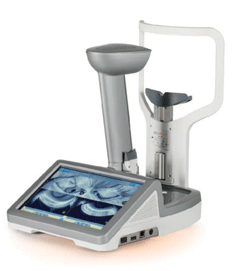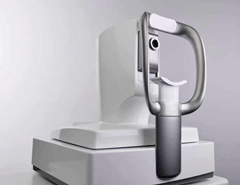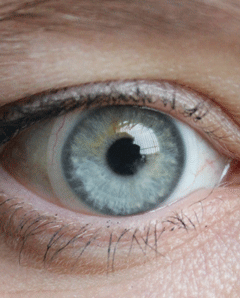 |
Ophthalmic Lenses
New Photochromic Lens Technology
With summer almost here, optometrists can look forward to offering Super Optical’s just-released line of Conversion photochromic lenses. Conversion offers a fast and seamless shift between tinted and clear, while blocking harmful UV light, according to Super Optical.
According to the company, patients can see Conversion with the company’s FastGrind ADDvantage HD Plus progressives, Single Vision, and Finished Single Vision lenses. FT 28 Conversion lenses will also soon be available. Conversion’s photochromic properties are in-mass, which provide truly longer performance, according to Super Optical. Additionally, their monomer will not yellow over time, and the use of a monomer solution retains the shift-speed, according to the company.
Visit www.superoptical.com.
 |
Diagnostic Technology
New MGD Imaging Device
TearScience has released LipiScan, a dedicated high definition gland imager that allows optometrists to efficiently evaluate meibomian glands in busy practices, according to the company.
The new rapid imager was created with end users in mind, according to TearScience.
The introduction of LipiScan will allow busy practices to efficiently integrate assessment of meibomian glands and do so at an affordable price, according to the company.
Visit tearscience.com.
 |
Retinal Blood Flow Imaging
Optovue has given optometrists a new imaging option to view blood flow in the retina. The AngioVue Retina is configured with OCTA and OCT features designed to allow retinal practices to adopt OCT and OCTA into the clinical workflow with minimal disruption, according to the company. Optovue’s AngioVue Retina provides retinal specialists with the ability to quickly visualize the presence or absence of retinal vessels and assess new information about the microvasculature with extraordinary detail, according to the company.
Visit optovue.com.
Contact Lenses
Better Trial Lens Fitting for Sclerals
Blanchard Contact Lenses has added a new feature, called XLC, to its Onefit Scleral Lens Platform. XLC, which stands for “extra limbal clearance,” is a new option that will make the existing trial set of standard 14.9mm lenses even easier to work with, by providing a simple solution for obtaining the extra limbal clearance needed, without increasing the lens diameter.
 |
Blanchard developed the XLC option so that the lens diameter, central clearance, power and the landing on the sclera do not change, while offering more limbal clearance due to steeper mid-peripheral curves or reverse curves.
The decision will be simple, according to the company. If the diameter of the lens is ideal (3.0mm larger than HVID), while limbal clearance is not, the XLC will help to create more limbal clearance.Blanchard developed the XLC option so that the lens diameter, central clearance, power and the landing on the sclera do not change, while offering more limbal clearance due to steeper mid-peripheral curves or reverse curves.
Visit www.blanchardlab.com.
Surgical Comanagement
New Cataract Drug Option
Imprimis has launched a new product that may be of interest to comanaging optometrists. The company’s anti-inflammatory combination drug was launched at the ASCRS Congress in New Orleans.
The Pred-Moxi-Nepafenac (prednisolone acetate, moxifloxacin hydrocholoride and nepafenac) formulation eliminates the need for multiple postoperative eye drops, according to Imprimis.
The company also introduced a sublingual sedative, as an alternative to the IV administration route, during this year’s conference.
For more information, visit www.godropless.com and www.imprimispharma.com.

